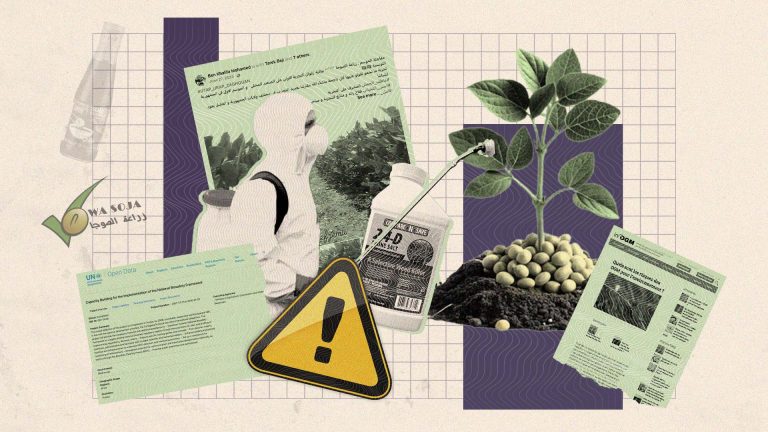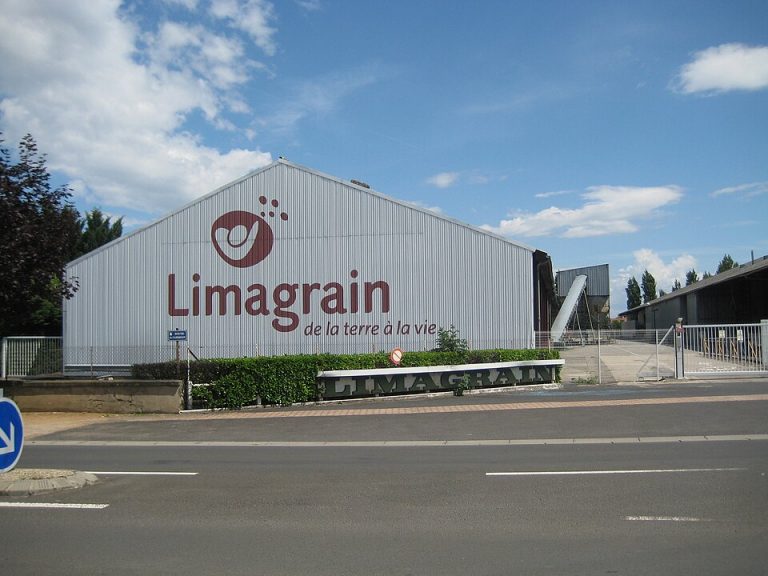EU – “Seeds”: the other proposal in the legislative package

On 5 July 2023, the European Commission presented a proposal to revise the legislation on “plant propagating material”. This reform aims to merge several pieces of legislation and introduces a number of new features. However, it remains rather “inflexible”, with a number of provisions that are, to say the least, “out of touch”.
On July 5, 2023, the European Commission published a new proposal for a regulation on “the production and marketing of plant reproductive material” (hereinafter PRM) [1] [2]. The term PRM refers to plants or parts of plants “capable of producing whole plants and intended for that purpose” [3]. These include seeds, tubers, stolons, grafts, but also cell cultures and other micropropagation materials.
What is therefore still only a proposal, available to date in English only (other official translations are expected in the autumn), will be debated within the Council and Parliament of the European Union (EU). The purpose of this article is simply to highlight the main provisions of this text (in an unofficial translation) in their current version. These may still evolve during the legislative procedure, although the margin is small. This proposal should also be read in conjunction with the proposal on “new genomic techniques” published on the same day. Finally, its application is based on that of the regulations on plant protection [4] and on official controls [5].
The stated aim of this proposal is ambitious: “to ensure, for all types of users, PRM of high quality and diversity of choice, adapted to current and future projected climatic conditions that will in turn contribute to food security, protection of biodiversity” [6]. But what is the reality? Are the provisions up to the task of meeting these challenges, which no one can dispute are so general and generous?
The main provisions
Scope of application
First and foremost, the Commission wants to simplify the legislative arsenal by merging into a single text the provisions that are currently scattered across numerous acts. The draft regulation is intended to replace the ten current sectoral directives, some of which date back to the 1960s.
The text of the regulation explicitly excludes from its scope forest reproductive material, which is the subject of a draft detached regulation, as well as ornamental plants [7] and exported PRM. The text also makes it clear that it does not concern the circulation of PRM between end users (such as amateur gardeners) for their own private use.
Production and marketing
The Commission continues to authorise the production and marketing of varieties registered at national level and according to certain categories: “pre-basic”, “basic”, “certified” or “certified” or “standard ” listed in Annex IV8 of the Regulation. This registration remains subject to the “distinctness, uniformity and stability (DUS)” criteria, and seed certification remains a prerequisite for marketing.
The inclusion of new plant varieties in the catalogue, renamed the “Register of Varieties”, will henceforth include an assessment based on their characteristics contributing to “sustainable” production, in addition to their agronomic technological value. This will be the case for all species. To this end, trials will be carried out “to check whether the new varieties have characteristics likely to contribute to more sustainable agri-food production” (see box). This requirement applies to all crop groups, but Member States would have “some flexibility to apply it according to their own agro-ecological conditions”. The duration of this registration is limited to a renewable period of ten years.
Two other provisions are also proposed:
a) the use of molecular marking to “verify the identity and varietal purity” of marketed seeds ;
b) the possibility of entrusting seed certification to professional operators under the supervision of the competent authority (principle of self-checking under official supervision [8].
Heterogeneous material and conservation varieties
The mechanism of simple notification to a competent national body (no European structure foreseen) put in place for biological material is extended to the “conventional” sector (non-organic). This provision reproduces that of Article 13 of the 2018 Organic Farming Regulation [9]. The traceability obligations and data required from producers of heterogeneous material remain the same as for current organic heterogeneous material.
Conservation varieties may only be sold in “standard” quality and must state “conservation variety” on the label [10]. They must also have an “officially recognized description”. Professional operators selling conservation varieties must notify the competent authorities of this activity annually, specifying the species and quantities concerned.
Operators
The text retains the concept of “professional operators” [11], but it provides for a derogation scheme for non-professional operators: private individuals/end users. Private individuals/end-users may buy PRM of unregistered varieties in certain forms (individual plants, tubers, etc.), provided that the fact that it is unregistered is indicated. Professional operators marketing such unregistered varieties exclusively to amateur gardeners must notify the competent national body annually, indicating the species and quantities concerned.
Genebanks/networks will also be able to sell and exchange unregistered PRM provided this is done on a not-for-profit basis. Farmers will be able to exchange their seeds (and not their plants) with other farmers under certain conditions, such as the absence of PVR (Plant Variety Right) protection, limited quantities and compliance with quality criteria (absence of pests and defects, satisfactory germination capacity). Quantities will be defined by species, by year and by Member States “in order to ensure that this derogation is not abused in a way that affects the marketing of seeds” (Recital 36).
Cultivation conditions
The Commission is proposing to regulate the growing conditions for certain registered varieties that may have “undesirable agronomic effects”. This is particularly the case for VrTH (Varieties rendered Tolerant to Herbicides). These conditions must include “measures in the field, such as crop rotation, monitoring measures, notification of these measures by the Member States to the Commission and the other Member States, communication by professional operators to the competent authorities of the application of these measures and indication of these conditions in the national registers of varieties” (Recital 69). The Commission is also authorised to regulate these conditions by means of delegated acts or implementing acts (two types of act prepared by “committees of experts”, which are not subject to Parliament’s control) [12]. These new conditions will be recorded in the national register of varieties.
Assessing the “sustainability” of PRM production
The draft regulation proposes (recital 49) that new varieties “of all genera or species must show an improvement over other varieties of the same genera or species registered in the same national register of varieties” with regard to certain aspects, in particular :
• yield (stability, yield under conditions of low input use, etc.) ;
• tolerance/resistance to biotic stresses (diseases caused by nematodes, fungi, bacteria, viruses, insects and other parasites) ;
• tolerance/resistance to abiotic stresses (adaptation to climate change conditions, etc.) ;
• more efficient use of natural resources (water, nutrients, etc.) ;
• reducing the need for external inputs (pesticides and fertilisers) ;
• features that improve the sustainability of storage, processing and distribution; – qualitative or nutritional characteristics.
A deceptive “flexibility”
Behind the Commission’s message of simplifying texts lies another simplification: the transition from directives that can be transposed into legislation by each Member State according to its own agricultural, cultural and legal context, to a mandatory regulation that does not allow for national interpretations. This simplification has been called for for many years by the multinational seed companies, which want direct access to the entire European market. Small companies offering seeds adapted to the specificities of each growing condition, as well as local or national food and cultural characteristics, will be penalized by the new requirements linked to this enlargement of the market.
Moreover, the attempted revision in 2014 was overwhelmingly rejected by the European Parliament, in particular because of the Commission’s failure to recognize a varied typology of players (“operators“) with diverse needs [13]. Although categories of operators are proposed here, small operators are subject to considerable administrative management, as the Réseau Semences Paysannes : “The Commission’s proposal adds another layer to the already heavy administrative and bureaucratic burden on those wishing to produce and sell PRM. Keeping records and preserving them for years, preserving samples and making them available to the authorities, notifying production annually in the various categories… who, apart from players who are already well established and/or of a certain size, will be able to meet these requirements?” [14] .
Such obligations are not yet fully defined and would remain under the control of the various national authorities. It is to be feared that they will penalize the primary activity of these operators and work to the detriment of peasant and organic farming and the maintenance of crop diversity. These measures will also have the effect of increasing the mass of administrative data in the few countries that had accepted national derogations for conservation networks and seed exchanges between farmers. On the other hand, they will represent a real opening up, albeit still too limited, in other countries where these activities have until now been subject to compliance with catalogue regulations.
The issue of “new GMOs”
On the same day, 5 July 2023, the Commission published a proposal in an attempt to deregulate a large number of GMOs, which it wishes to rename “NGT” (New Genomic Techniques). This legislative act is linked to the present proposal for a Regulation on PRM, since the latter cites “new GMOs” and “NGTs” of categories 1 and 2 in its provisions on registration (Articles 47 and 56 [15]. On 30 August 2023, at a meeting of the “agriculture and rural development” committee, Ms André (DG Health) explained how these two regulations would work together. The starting point will be the NGT/GMO regulation on labeling, followed by the application of the PRM regulation.
Insofar as the PRM proposal includes “sustainability” criteria [16] (see box), this may serve as a stepping stone for the “new GMOs”. Indeed, some of their advocates strangely present them as an opportunity for the development of biodiversity and the adaptation of genetic resources to climate change
[17]. In this respect, it is worth recalling the 2021 study by the consultancy firm ICF, commissioned by the European Commission itself, which stresses, on the contrary, the dangers that “new GMOs” can represent for biodiversity, including cultivated biodiversity [18].
This proposal on PRMs does not explicitly address patents, even though the issue does concern certain players in the seed sector, particularly small and medium-sized farmers and seed companies. The “new GMOs”, like the old ones, are in fact all protected by patent rights which – despite their questionable validity – can make it illegal for farmers to use PRMs [19]. Especially as the Commission’s proposal does not allow information on patents – which could help farmers make the right choices – to be included in the registers.
But the issue of patents is still very much lurking in the background. On 5 July 2023, the Commission published a communication stating that it will assess “the impact that plant patenting and related licensing and transparency practices may have on innovation in plant breeding” [20]. PRM potentially including patented elements would therefore also be concerned. It also stresses the importance of providing a “balanced and calibrated legislative framework […] guaranteeing farmers’ and breeders’ access to patented techniques and material, in order to promote seed diversity at affordable prices, and preserve the breeding and cultivation of non-patented conventional and organic plants”. The Commission plans to publish its evaluation report in… 2026. Whether intentional or not, this lack of foresight on the part of the Commission is unfortunately preventing the conclusions of this report from being taken into account in the current legislative procedure.
This new proposal for a regulation on the PRM will be examined at first reading by the European Parliament and the Council under the ordinary legislative procedure (OPL) [21]. Civil society, NGOs and farming unions therefore have the opportunity, particularly via parliamentarians, to comment on it and suggest amendments [22]. Between 1999 and 2019, the rate of adoption a first reading of acts under the OLP rose from 28% to 89% [23]. So what chance is there that such changes will actually be taken into account by the European Union? Also, what are we to think of the usefulness of the “consultation” set up by the Commission inviting EU citizens to give feedback on the proposed regulation? [24]. The legislative procedure makes no provision for these opinions to be taken into account.
We would like to thank Amélie Hallot-Charmasson of the Réseau Semences Paysannes who helped proofread this article.
[1] A first attempt at revision was made in 2013.
[2] European Commission, “Proposal for a regulation of the european parliament and of the council / N° 2023/0227”, July 5, 2023.
[3] Defined in Article 2(1) of Regulation (EU) 2016/2031 of the European Parliament and of the Council of 26 October 2016 on protective measures against organisms harmful to plants
[4] Ibid.
[6] First point in the explanatory memorandum.
[7] They are currently governed by Council Directive 1999/105/EC and ornamental plants by Directive 98/56/EC.
[9] [European Regulation No. 2018/848 on organic farming of 30 May 2018>https://eur-lex.europa.eu/legal-content/FR/TXT/?uri=celex%3A32018R0848].
[10] A conservation variety is defined in Article 3 (29) of the proposed Regulation on PRM No 2023/0227 as a variety :
“(a) traditionally grown or newly created locally under specific local conditions and adapted to those conditions ; and
(b) characterized by a high level of genetic and phenotypic diversity between the different reproductive units”
[11] “Professional operator” means any natural or legal person professionally involved in one or more of the following activities in the Union relating to PRM :
a) production ;
b) marketing ;
c) variety maintenance ;
d) provision of identity and quality services ;
e) conservation, storage, drying, processing, treatment, packaging, sealing, labeling, sampling or testing.
[12] Treaty on the Functioning of the EU, Legal acts of the Union, adoption procedure and other provisions, Art. 290.
[13] , « UE – Le Parlement européen rejette en bloc le règlement semences », Inf’OGM, 12 March 2014.
[14] Réseau Semences Paysannes, “Actualités Juridiques, Juin-Août 2023”, 11 September 2023.
[15] For example, Article 56.1 (j) reads as follows (unofficial translation):
“Contents of the application for registration of a variety
1. The application for registration of a variety in a national register of varieties shall consist of the following elements : […] (j) where the variety contains a genetically modified organism modified or consists of such an organism, proof that the genetically modified organism in question is authorised for cultivation in the Union, in accordance with Directive 2001/18/EC or Regulation (EC) No 1829/2003 or, where applicable, in the Member State concerned, in accordance with Article 26b of Directive 2001/18/EC […]”
[16] VSCU criterion for “Value Sustainable Cultivation & Use”
[17] , « Le changement climatique : une opportunité pour les OGM ? », Inf’OGM, 15 December 2022.
[18] European Commission, ICF study, “Data gathering and analysis to support a Commission study on the Union’s options to update the existing legislation on the production and marketing of plant reproductive material”, p.20, 2021.
[19] ,
, « Crispr/Cas9 : l’accès à un champ de mines ? », Inf’OGM, 21 June 2022.
[20] European Commission, [21] European Parliament, “Legislative procedure ordinary” (consulted on 20 July 2023).
[22] Official public comments can be sent for 8 weeks, i.e. until 3 September, although this period normally begins after the publication of all translations of the Commission proposal.
[23] European Parliament, “Overview – Ordinary legislative procedure”.
[24] European Commission, Legislation, “Have your say / Plant and forest reproductive material (revised rules)”.











